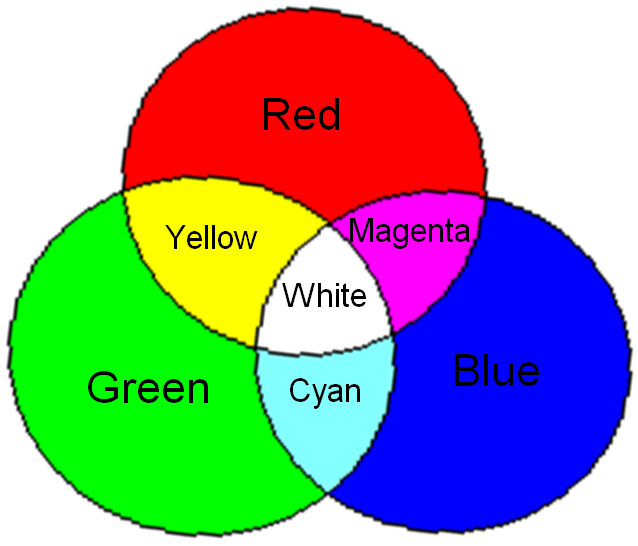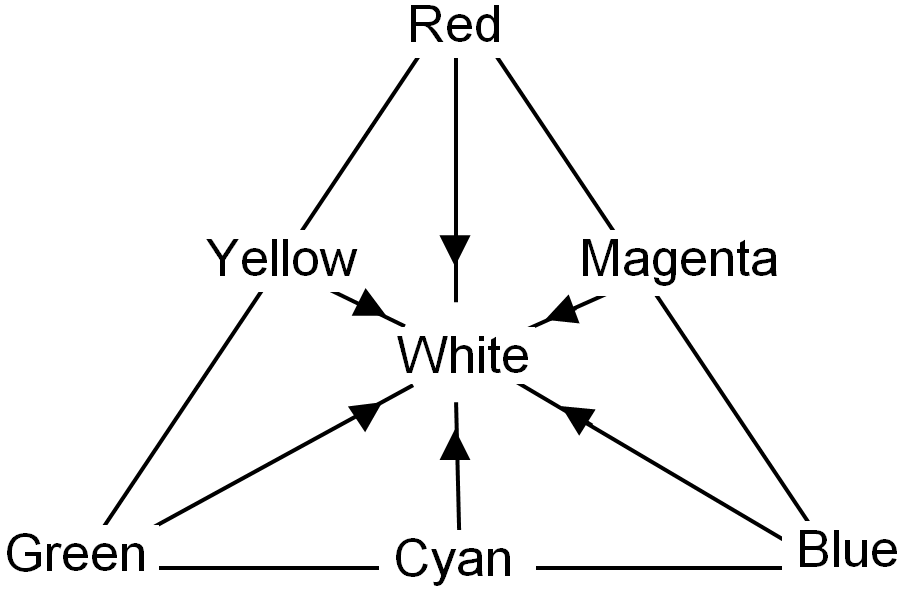Primary Colors
The colors that cannot be obtained by mixing any other colors in any proportions are called primary colors. The primary colors of light are red, green, and blue. These colors are also called basic colors of light. the reason for considering red, green and blue as primary colors is that all the other colors are made by mixing primary colors in suitable proportions. An interesting thing to be noted about primary colors is that when red, green and blue colors are mixed together they make white light.
Secondary Colors (Composite Colors)
The colors produced by mixing any two primary colors of light are called secondary colors or composite colors. Magenta, cyan and yellow colors are secondary colors.
Experiment for Formation of Secondary Colors

Take three torches and cover there glasses with red, green and blue cellophane papers, so as to produce red, green and blue light respectively. Now, switch on the torches and project all the three coloured lights on a white screen or wall, so that these coloured light may overlap. Now, you will observe that the area where red and green coloured lights overlap appears yellow. And the area where red and blue coloured lights overlap appears magenta. In the same way the area where blue and green coloured lights overlap gives cyan colour. Also, you will observe that the area where all the coloured lights overlap, appears white. We can also write these results as given below:
Red + Green = Yellow
Red + Blue = Magenta
Blue + Green = Cyan
Complementary Colors
Complementary colors are the two colors, which give white light when mixed together. For example, red and cyan are complementary colors because they produce white light on mixing together. In the same way, blue and yellow, and green and magenta are also complementary colors. The complementary colors can be easily remembered with the help of figure given below. The colors present exactly opposite to each other in the triangle are complementary colors.
Colour Triangle to show formation of secondary colors from primary colors

The use of complementary colors is also common in our daily life. The best example of it is the mixing of indigo in lime during white washing of buildings. Actually, with the passage of time the colour of buildings becomes yellowish. Because blue colour is complementary colour of yellow colour so mixing of indigo in lime during white washing keeps the buildings white for a long time.
Pigments
The chemicals which imparts colour to other bodies are called pigments. For example, human blood is red in colour due to the presence of heamoglobin pigment in it. in the same way, the colour of most plants is green due to the presence of chlorophyll pigment.

Test Your Understanding and Answer These Questions:
- What are primary colors? Give examples.
- What are secondary colors? Give examples.
- Give an experiment for the formation of secondary colors from primary colors.
- What are composite colors? Give examples.
- Why indigo is mixed in lime when a building is to be whitewashed?
